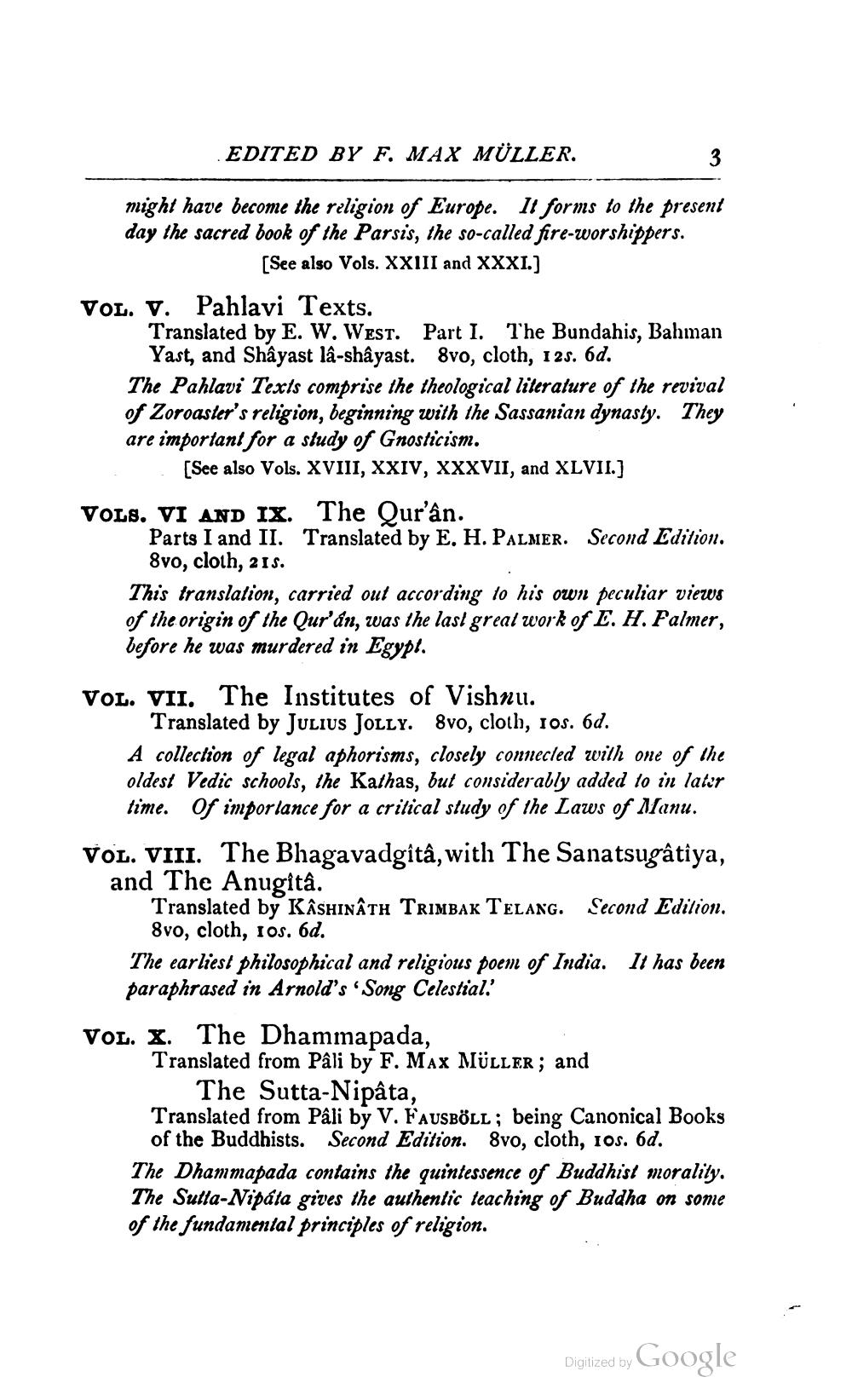________________
EDITED BY F. MAX MÜLLER.
might have become the religion of Europe. Il forms to the present day the sacred book of the Parsis, the so-called fire-worshippers.
[See also Vols. XXIII and XXXI.] VOL. V. Pahlavi Texts.
Translated by E. W. West. Part 1. The Bundahis, Bahman
Yast, and Shầyast lâ-shấyast. 8vo, cloth, 125. 6d. The Pahlavi Texts comprise the theological literature of the revival of Zoroaster's religion, beginning with the Sassanian dynasty. They are important for a study of Gnosticism.
[See also Vols. XVIII, XXIV, XXXVII, and XLVII.] VOLS. VI AND IX. The Qur'ân.
Parts I and II. Translated by E. H. PALMER. Second Edition. 8vo, cloth, 215. This translation, carried out according to his own peculiar views of the origin of the Qur'an, was the last greal work of E. H. Falmer, before he was murdered in Egypi.
VOL. VII. The Institutes of Vishnu.
Translated by JULIUS JOLLY. 8vo, cloth, ros. 6d. A collection of legal aphorisms, closely connecled with one of the oldest Vedic schools, the Kathas, but considerably added to in later
time. Of imporlance for a critical study of the Laws of Manu. VOL. VIII. The Bhagavadgitâ, with The Sanatsugâtîya, and The Anugita.
Translated by Kashinath TRIMBAK TELANG. Second Edition. 8vo, cloth, ros. 6d. The earliest philosophical and religious poem of India. It has been paraphrased in Arnold's Song Celestial.'
VOL. X. The Dhammapada,
Translated from Pâli by F. Max MÜLLER; and
The Sutta-Nipâta, Translated from Pâli by V. FAUSBÖLL; being Canonical Books of the Buddhists. Second Edition. 8vo, cloth, 1os. 6d. The Dhammapada contains the quintessence of Buddhist morality. The Sutta-Nipáta gives the authentic teaching of Buddha on some of the fundamental principles of religion.
Digitized by Google




